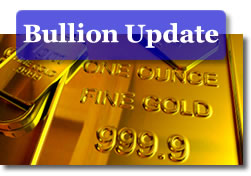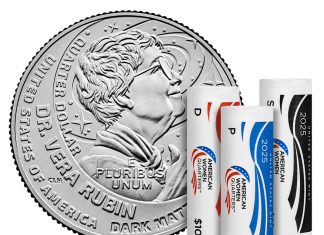 Giving [Swiss] Credit To The Fundamentals
Giving [Swiss] Credit To The Fundamentals
Good Morning,
Gold prices held up fairly well during the overnight hours, following the respite from trading induced by yesterday’s hiatus in the US markets. Whilst scattered buying initially maintained values near the mid and high $1130s, the general tenor was rather lackluster overseas.
Indian traders were seen mainly on the sidelines, awaiting fresh price declines, while other speculators continued to lavish attention on the noble metals –which continued to scale fresh year-and-a-half peak in the post ETF-launch mini-mania that has been sweeping those relatively tiny markets.
"However, the strong investor interest in PGM’s has come at gold’s expense, said Matthias Detremmerie, founder of Goldessential.com. "Whereas platinum and palladium ETF’s have seen strong inflows, their gold-backed counterparts have so far only been hit by net redemptions this year. Some 20.85 tonnes of them [year-to-date]."
Up to the start of the Tuesday session in New York this morning, gold bullion prices (except that of platinum) succumbed to a much stronger US dollar and eased back to under the $1130 mark in spot levels. The greenback gained nearly three-quarter percent on the trade-weighted index and remains robust near 77.50 as the aftermath of tame inflation figures released on Jan. 15 continues to be manifest.
The euro took one on the chin this morning, falling to 1.426 after news showing German investor confidence dropping more than anticipated hit the financial wire services. Confidence levels sank as the local economic recovery showed signs of structural fatigue and as external negatives (Greece, for example) continue to unnerve investor in the country. Chancellor Merkel’s stimulus programmes are soon coming to an end (as are those in the US) but are doing so at a time when the German economy has likely recorded three months of stagnation ending in December.
New York spot bullion prices opened with only a small decline in gold, which was quoted at $1130.40 per troy ounce, down $2.30 at starting time. As the Kitco Gold Index revealed, the rather small visible decline was attributable to predominant buying in the metal, which partially (and, later on, fully) offset an otherwise near $7 decline that would have been recorded due to the strengthening seen in the US dollar.
The yellow metal remains confined to the $1125-$1145 value zone for the moment, and breaks to higher ground might-at this point-only materialize if the spillover effects of the PGM-oriented metals ETFs buying spree continues to keep things buoyant. Choppiness will not be lacking as the abbreviated week rolls on, and players are now eyeing the release of wholesale inflation numbers tomorrow.
Silver lost 11 cents on the open, and was quoted at $18.53 per ounce as it continues to be receiving less speculative attention than certain other white metals. Platinum-unsurprisingly-was up once again, rising $8 to $1621 per ounce on the coattails of the aforementioned ETF ounce accumulation bonanza.
Carmakers are likely thinking of another acronym for the noble metal ETFs – one in which the "T" stands for ‘troubling’ with regard to prices and competing buyers. Palladium fell a modest $2 to $456 per troy ounce this morning. Rhodium remained firm at $2630 bid. The US dollar reached 77.60 on the index as at 8:30 AM NY time (a gain of 0.60) while crude oil dropped $0.60 to $77.41 per barrel.
Apparently, someone else has been paying some attention to the trends developing in the gold market’s fundamentals and has come away with some level-headed conclusions. We have consistently noted that it is difficult to make a hyper-bullish case for gold prices at a time when mine supply managed a 6% annualized gain in 2009, scrap supplies flowed at historical record levels, and fabrication demand sank to a two-decade low.
Such ‘heresy’ was unwelcome at a time when dollar-bashing appeared to be as aggressive as it has ever been, and spec funds were seen building up a roughly 800 tonne mountain of long futures contract positions. Well, analysts at Switzerland’s Credit Suisse took the above factors into account and they have now come up with the following (soon to be crucified by certain quarters) conclusions:
"We are of the view that the gold market will likely be dominated mainly by the demand side of the equation in 2010. We believe that the likely decline in investment demand for ETFs, year on year, will play a pre-eminent role as a swing factor in our supply-and-demand balance in 2010.
Jewellery, industrial and dental demand will likely strengthen marginally year on year. The secondary supply of scrap will depend on the gold price but will likely remain above 50% of mine supply. Central banks will likely become net purchasers while de-hedging will reduce significantly as the major players in this arena accelerate their 2009 de-hedging activities.
Our calculations show a large oversupply of around 420 tonnes in our supply-and-demand equation for 2010.
In summary, we believe that the steam has run out of investment demand as the economic environment has and is changing to the positive. Muted investment demand coupled with a change in market sentiment and a projected large oversupply in the supply equation all point to a downward correction in the gold price from the highs reached at the end of 2009."
In so many word, the market better find some eager takers for another 400+ tonnes of the shiny stuff –and in a hurry-lest prices come down to a level where the rest of the pillars of the gold market actually show some signs of coming closer to some semblance of balance and reason. TD market analysis late last year pointed to similar tilts shaping the market in 2010. GFMS analysts had-just last week-warned that the gold market has become utterly dependent of investment offtake and that such a dependency was perhaps not the healthiest development to note as we start the new year.
We would clearly be a lot more positive on gold’s near and medium-term price gain probabilities if in fact such investment demand was identifiable as coming mostly from, say, pension funds with very long-term time horizons, individual ‘man in the street’ type of investors, and similar, rather than the spec funds whose trading priorities and historically fickle participation patterns make for little more than time bombs in the various markets they touch and have touched (see oil, see a long list of assets whose price charts have looked like the silhouette of a typical volcano over the years).
The good folks over at www.goldbarsworldwide.com Down Under have recently updated their information on a couple of topics of interest to many a would-be as well as current gold owner. Specifically, two new "Basic Information" sections have been placed on their website as of today: The first one, relates to buying and selling gold bars and serves as "A Guide for New Investors" while the other, covers GFMS statistics, again, with the aim to enhance the educational dimension of the website. If you wish to glance at the new sections –and we think you owe it to yourself to do so, just click on: www.goldbarsworldwide.com
PS
KTCO URGES YOU TO PLEASE GIVE TO THE VICTIMS OF THE TRAGIC QUAKE IN HAITI. PLEASE VISIT THE LINK ON THE KITCO HOMEPAGE: http://www.kitco.com/reports/Kitco_Cares.html
GIVE ANYTHING. GIVE A DOLLAR, GIVE FIVE, OR GIVE MORE, IF YOU CAN. EVERY SINGLE DONATION HELPS. SOMETIMES, GIVING MONEY IS FAR MORE CRITICAL THAN TRYING TO MAKE MORE OF IT. THIS IS ONE OF THOSE TIMES.
Until tomorrow,
Jon Nadler
Senior Analyst
Kitco Metals Inc.
North America
Blog: http://www.kitco.com/ind/index.html#nadler
Check out other site market resources at Bullion Prices, Silver Coins Values and the US Inflation Calculator which easily finds how the buying power of the dollar has changed from 1913-2009.










